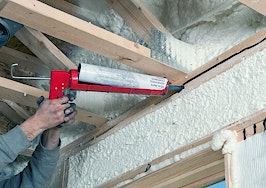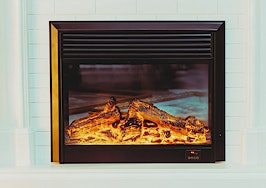Residential properties are delivered broom clean and empty as required by sales contracts. No agent or buyer wants to have to deal with construction debris in a new home or the prior owner’s unwanted possessions in a resale.
The most objectionable situation in a purchase is when the property comes with an infestation of rodents or bugs — or worse yet, a family of skunks, opossums or squirrels.
Agents who can offer knowledge and solutions for the removal of these unwanted pests will be valued and in demand. So, if you want to help your clients with this issue, here are a few things to consider.
1. Identifying pests and where they came from
The first step in ridding a property of pests is to determine the type of pest and the point of entry. Some simple sleuthing of the perimeter of the property will reveal paw prints, tracks or paths, chewed or gnawed areas of wood, small piles of sawdust and animal droppings.
Animas, rodents or pests that like to nest inside houses are attracted to dark, quiet and moist spaces. The space under porches or decks and crawl spaces are common areas where rodents and pests like to nest.
Attics are the second most desirable homestead for other types of animals such as squirrels, birds and raccoons. Bees and other insects can infiltrate walls and hollow spaces in ceilings or closets.
2. Trapping or removing the pest (in a humane way)
Some simple, inexpensive methods to repel small animals include ammonia-soaked rags, mothballs, bright lights and loud music. Colorful balloons can act as a type of scarecrow to intimidate animals from entering a home.
When all else fails, a cage with a treat inside can lure an unwanted pest out of hiding. This is why identifying the type of animal is important, so they can be attracted to an appropriate bait.
Professional services are available to remove larger or dangerous animals, but there are a few simple ways to do some preliminary work before calling in the experts.
3. Preventing their entry
The best way to deal with unwanted pests is to prevent their entry in the first place. Therefore, make sure that all holes in the perimeter are sealed and that all windows and doors close firmly.
Tree branches that touch a house or extend over a roof can provide easy access to birds, squirrels and other tree-climbing creatures. Experts advise trimming branches that touch a house or are close to windows and roofs.
Animals are always attracted to food sources, so bird feeders should be placed at a distance from a home. Pet dishes of food should be removed as soon as the food is consumed, and most obviously, all trash and garbage sealed in containers with tight-fitting lids. Compost piles should be located away from any structure, whether a shed, garage or porch.
Exterior lighting should be yellow or high-pressure sodium to repel animals and other pests. Old nests which have been abandoned must be promptly discarded to prevent attracting new residents.
Piles of clutter including building supplies, flower pots, gardening tools and bags of soil can attract rodents and bees who will be drawn to nest inside. Should infestations result, again, fans, wind chimes, radios and balloons can all help to repel some birds and animals and prevent new problems.
4. Understanding the damage
In addition to the noise and disturbance that animals can cause inside an attic or between walls or ceilings, their waste and uric acid will eat away at building materials and insulation.
Birds, in particular, look for nesting materials and will chew and shred paper, fabric and other building materials. The most common birds that will nest in attics are starlings, pigeons and sparrows. Raccoons can be particularly vicious, chewing on siding wiring, and shingles, as well as spreading rabies.
Bats, another unwanted resident of attics and open spaces won’t attack humans but will spread waste and attract other pests, perpetuating the problem of unwanted animals.
It is also important to realize that pests can reproduce quickly, causing the issue to grow exponentially. Raccoons can have several litters a year and squirrels have two, compounding the problem. Wire mesh or hardware cloth are two ways to close openings that allow pests to enter a home.
Realtors who are well versed in the unpleasant but very necessary topic of pest and animal control and removal can help to reassure both buyers and sellers that solutions are available to rid houses of unwanted animals, insects and birds.
An observant agent can detect issues and offer solutions to pest problems before they become unmanageable. When all else fails, local experts who are well-versed in the type of pests that are most common in their area are ready to help.
Gerard Splendore is a licensed associate real estate broker with Warburg Realty in New York. Connect with him on LinkedIn.








